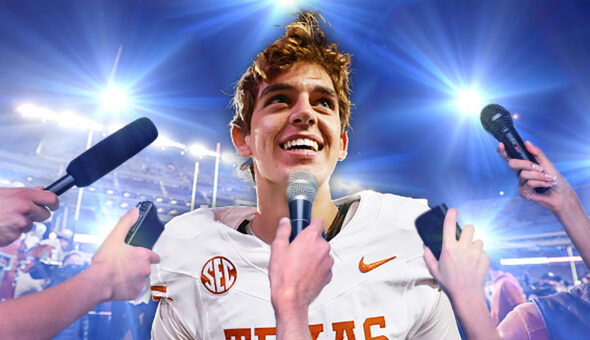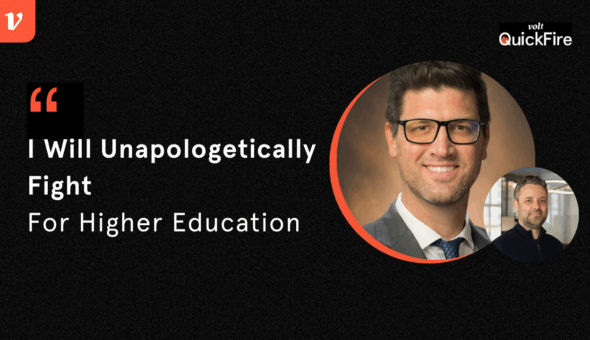Personalized web content and videos create custom experiences for users based on who they are and what they’re looking for. Websites or videos that dynamically incorporate information about a person, such as their name, city, or interest are one example of this. Personalization can also be used to send relevant information to a user based on previous online behaviors. You’ve no doubt benefited from personalization yourself; Amazon recommends certain products based on previous searches and past purchases we’ve made, and Netflix suggests movies and TV shows based on what we’ve watched in the past. Both examples save time and effort on the consumer’s end, making the decision of what product to buy or show to watch feel almost effortless. And as most of us can attest, it’s easy to find yourself 5 episodes deep in a new series or adding an impulse purchase to your cart when most of the decision-making legwork has already been done for you. But how can the same strategy apply to a purchase decision as complex as choosing a college? Using personalized content, colleges and universities have the opportunity to position themselves as the best fit for a particular student based on the academic program, extracurriculars, or careers that student is interested in. In doing this, schools can speak to students on a much more personal level, using targeted messages designed to increase engagement and guide them down their own unique path towards enrollment.
Although this generation’s college applicants have grown up accustomed to Netflix-level personalization in other areas of their life, most higher education marketing departments still take a one size fits all approach to user experience.
Why Higher Ed Institutions Can’t Afford Generic Content
In an interview we conducted back in March of 2017 with a high school senior on her process of choosing a college, she admitted to Googling her top schools for hours on end as she sought to make a decision. As she narrowed her options even further, Libbey sheepishly admitted that it was “a bit obsessive” how much time she was spending on these schools’ websites, trying to figure out what made them different. This interview with Libbey only further confirmed what we already knew: websites are the most powerful marketing and communications tool your school has to reach prospective students. Consider that nearly 70% of college-bound juniors and seniors identified college websites as a resource influencing interest in a school, according to a 2016 Ruffalo Noel Levitz survey. And although this generation’s college applicants have grown up accustomed to Netflix-level website personalization in other areas of their life, most higher education websites still take a one size fits all approach to user experience. With nearly 58% of admissions counselors reporting that they failed to meet their admissions goals for the 2015-2016 cycle, it seems higher education enrollment groups are feeling the pressure to close more applicants into enrolled students. Data shows that 68% of marketers say personalization based on behavioral data has a high impact on ROI. To help close the gap, it’s time for schools to stop treating all users the same, and start optimizing campaigns to convert and engage more prospective students – whether it’s their first interaction with your schools, or their fifth time searching for information on engineering majors.
Who Higher Ed Should Be Personalizing For
Although most higher education websites are used by a wide variety of unique audiences, it’s important to start small with content personalization so as not to get overwhelmed. Because prospective students are often the top audience that schools are looking to attract, we recommend starting here and expanding your personalization efforts to include other critical audiences such as alumni and donors as time goes on. The aim is to create personalized experiences online that allow prospective students to see how they will fit in at the school and push the prospect to engage by asking for more information, scheduling a tour, or applying to a program. By segmenting your audience of prospective students based on who they are and where they are in the decision-making process, you’ll be able to provide more relevant information tied to their specific needs and interests.
How Colleges and Universities Can Personalize Online Experiences Today
Selecting the tool you’ll use to implement marketing personalization is an important step that will determine how easy it is to accomplish your goals. Whether you choose to use your content management system, a third-party tool, or a custom development on your site to create these personalized experiences, be sure to choose a tool that complements your strategy rather than limits it. Although the possibilities are nearly endless, these are just a few of the personalization tactics you may consider incorporating into your lead nurturing strategy for prospective students moving forward:
Personalized Video
Video provides the highest information retention for users (up to 95% of a message, compared to 10% when reading text) and the best ROI for marketers. Combining video with personalization allows you to deliver truly unique messages to prospective students that integrate their name, school, photo, or any other variable you have in your user database. For the typical prospective student who receives thousands of digital messages per week, personalized videos are a powerful tool that get noticed.
Relevance Personalization Tactics
These are triggered based on who the prospective student is and what actions he or she has taken on the site. For example, if you know that a potential undergraduate student Mary has viewed multiple program pages related to accounting, it would make sense to show her other related content such as program requirements, alumni profiles of former students working in accounting, and local companies that hire accounting grads. This can take the form of an automated email that is sent to her, or information that is presented in contextually relevant places on your website.
Applicant Journey Personalization
Whereas relevance tactics rely on relatively simple triggers based on preferences or geographic location, personalization based on the applicant’s journey requires a more complex analysis of actions and behaviors. This requires you to understand what a typical student’s journey looks like on your website as they move through the awareness, consideration, and decision stages of the applicant’s journey. For example, as prospective student Mike moves further down the funnel towards applying to your school, viewing more pages and visiting the site more frequently, it may be helpful for him to speak with an admissions counselor. Using data to trigger your personalization tokens, you can display targeted information regarding connecting to admissions personnel via email or phone when Mike is ready to take that next step.
CRM Personalization Tactics
By connecting your CRM and website personalization engine of choice, you can unleash a new wave of personalization opportunities to help convert prospective students into applicants and enrolled students. For example, imagine that Amy has just been admitted to your college or university, and your CRM has tracked this information and shared it with your personalization engine. The next time Amy visits your website, it can now display a message that prompts her to submit her deposit. This is a simple way to eliminate work for you, while increasing yield over the long run. At our 2017 panel discussion on Digital Marketing in Higher Education, Eric Greenberg, Senior Director, Marketing Technology at the Wharton School shared how his team uses HubSpot’s CRM in conjunction with Salesforce Communities to help nurture prospective students with personalized content. Through HubSpot, leads are automatically identified as being more qualified based on certain demographic and behavioral qualities. Once they are identified as “marketing qualified leads,” or prospective students who fit Wharton’s criteria and have shown interest, they are invited to join a selective Salesforce Community. “Once they’re in there, we can begin to identify what their self-selected interests are and begin to provide the content, and the connections, to get them to the next step of that journey,” said Greenberg. Whether your goal is more applications, visits, or enrolled students, marketing personalization is worth exploring to ensure your users receive a tailored experience on their path to conversion. By incorporating real-time personalization, you open up a unique dialogue with prospective students that speaks to them directly and encourages them to take action. This conversation could ultimately mean the difference between a newly enrolled student, or a prospect lost to a school that better understood their needs. Are you ready to delight your audience with website or video personalization? Get in touch with us today to make your next campaign a more memorable one.









